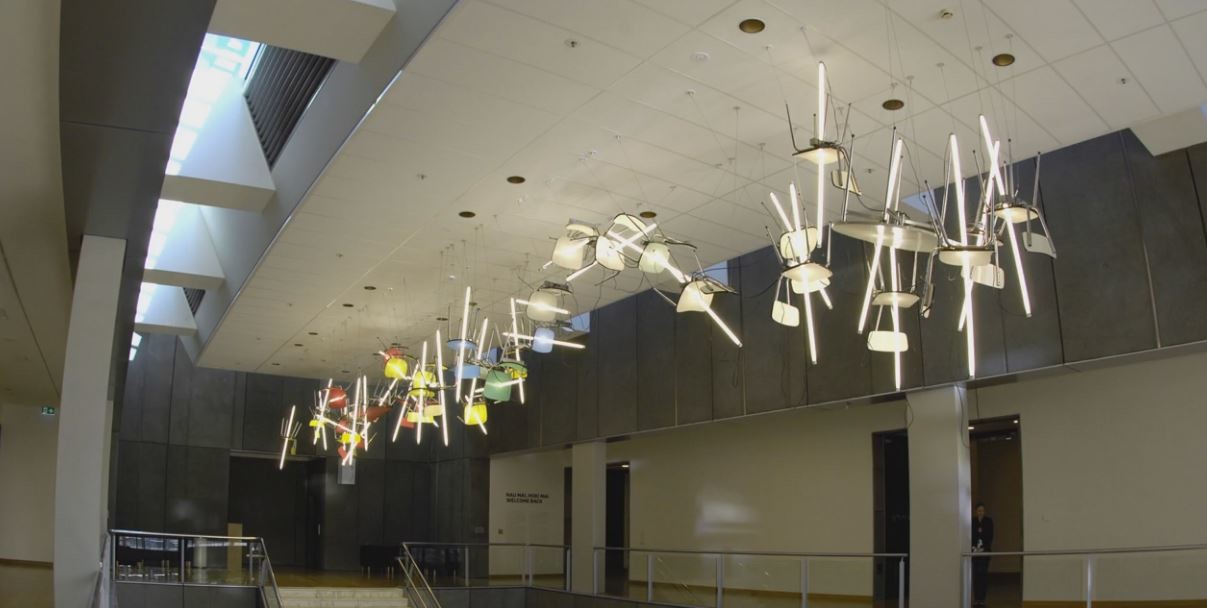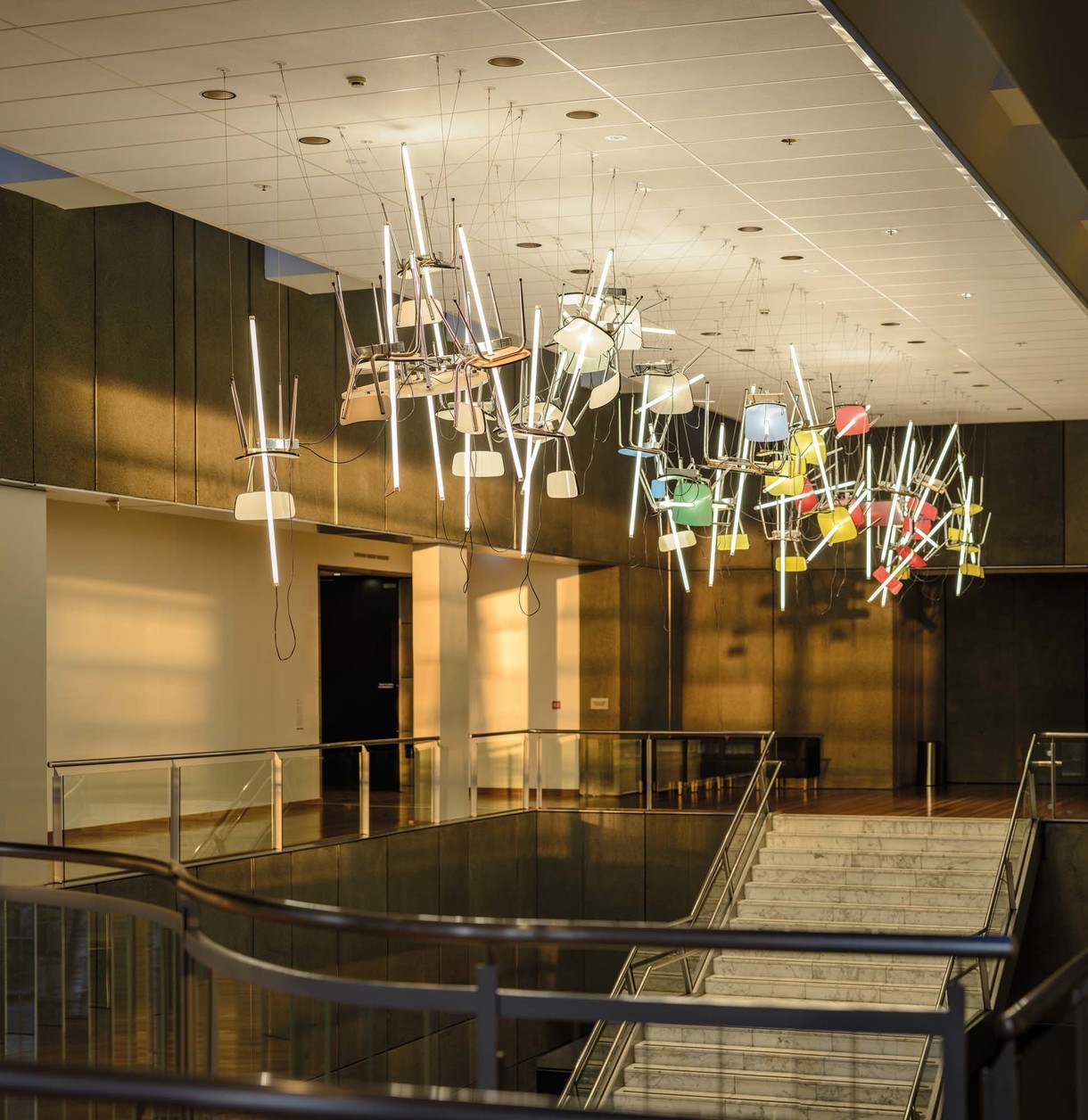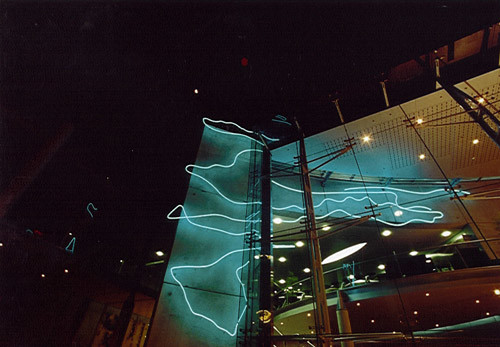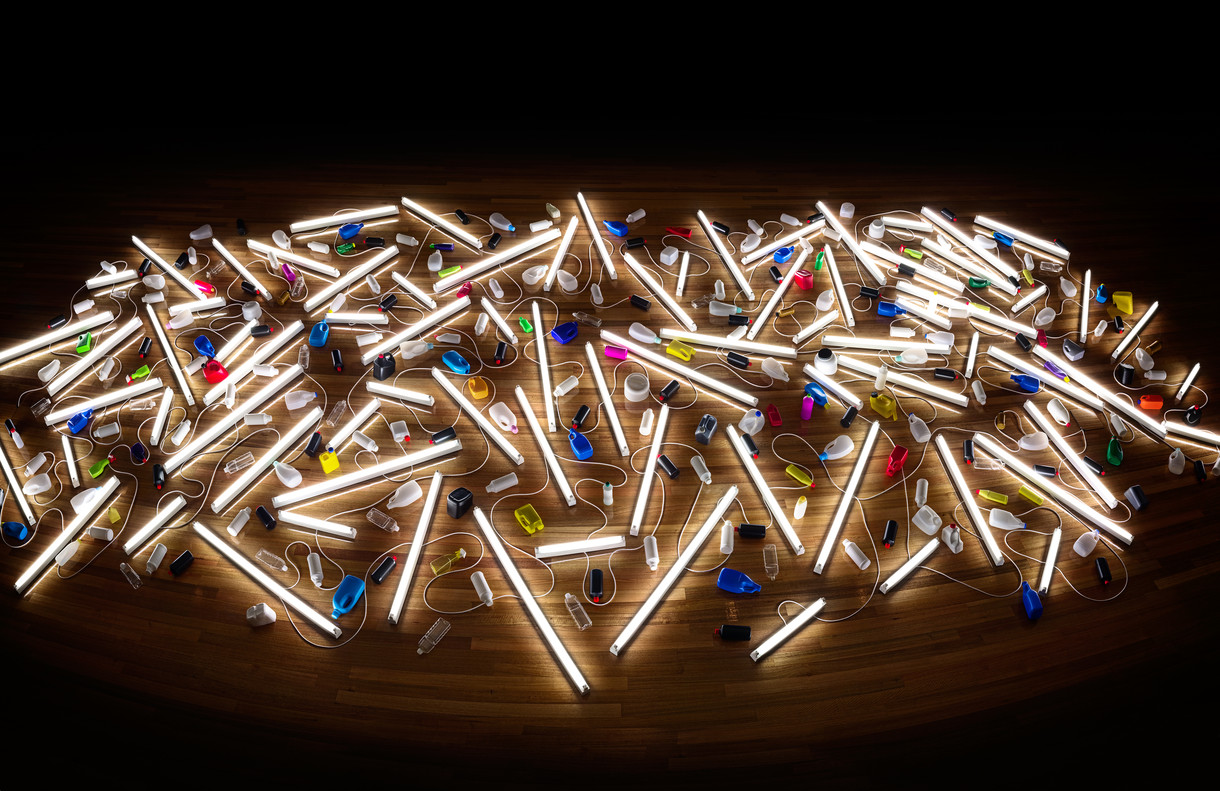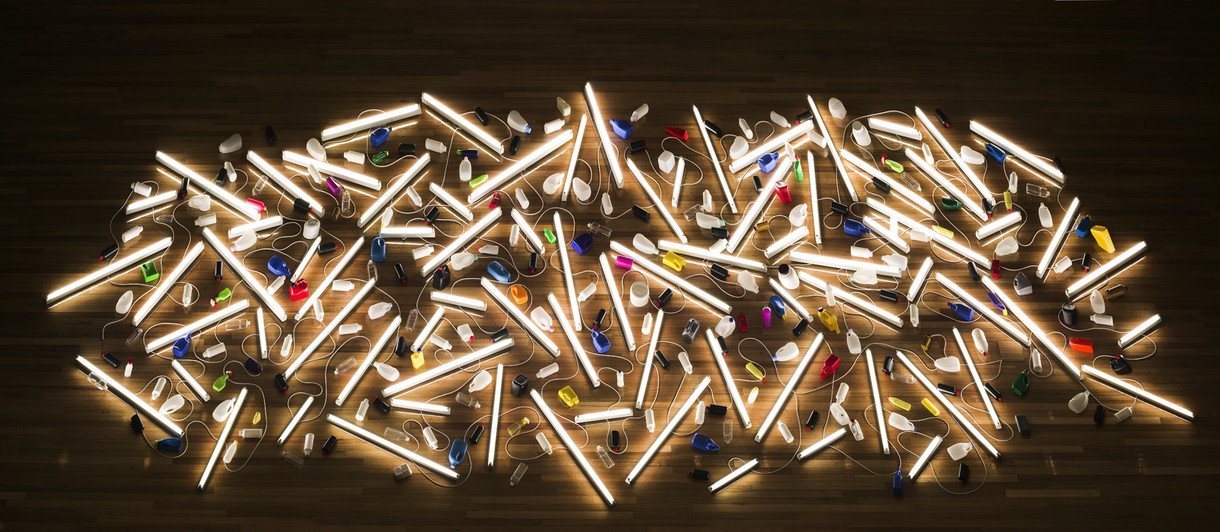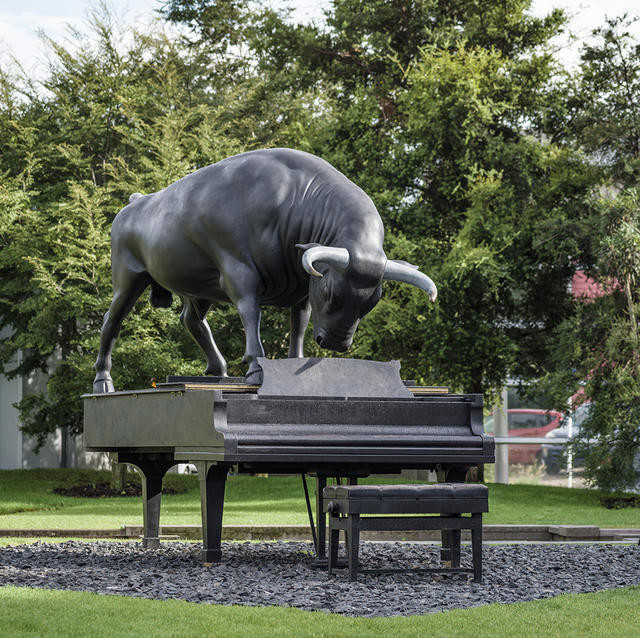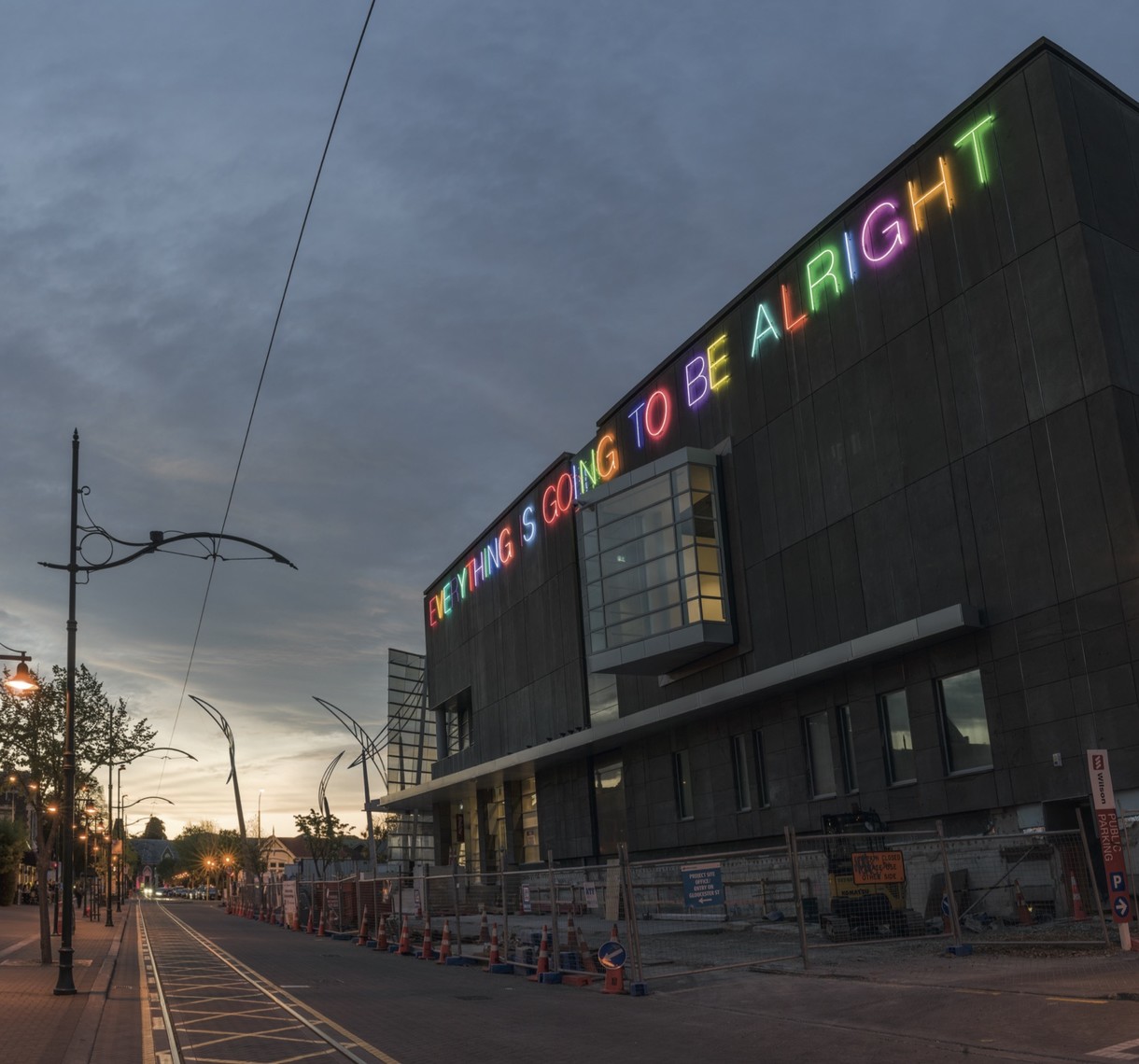Bill Culbert
Aotearoa New Zealand / England / France, b.1935, d.2019
Bebop
- 2013
- Furniture, fluorescent tubes, electrical components, wire
- Purchased with assistance from Gabrielle Tasman and the Christchurch Art Gallery Foundation, 2014.
- 2014/035
Location: Foyer
Tags: chairs (furniture forms), electric wiring, fluorescent lighting, furniture, light art, light (energy)
Bill Culbert made Bebop for a corridor in an old church in Venice, Santa Maria della Pietà, when he represented New Zealand at the Venice Biennale in 2013. He found the colourful tables and chairs in flea markets and at attic sales near his studio in the south of France. The title of the work comes from one of the tables.
“We were collecting one of the Formica dining sets from a family in Caromb, a small town just south of Mont Ventoux. They brought it with them from Oran in Algeria when they moved to France decades ago, and they still had the receipt with the name of the furniture – Bebop! It was perfect. Charlie Parker, Dizzy Gillespie. The dancing was phenomenal. It really is about energy, noise… A very noisy work in a very silent space.”
Bebop is a style of jazz that developed in the early 1940s. It is characterised by its fast tempo and improvisation, where solos float free over the underlying structure of the song. Culbert's Bebop floats over the Gallery’s stairs, a wild orchestration of furniture pierced by bars of white light.
Bill Culbert left New Zealand in 1957 with a scholarship to study at the Royal College of Art. He later split his time between London and the Vaucluse, with annual trips back to New Zealand. From the later 1960s he made installations using light and discarded objects – bottles, suitcases, jars, tables and chairs – exploring the ways that light and shadow transform the way we see the everyday world.
He described Bebop as “a vortex of useable things that are out of place.” The Formica and chrome surfaces reflect light, the tumbling furniture creating a sense of movement and energy that travels the length of the work. Culbert called it kaleidoscopic: “as if they are on their way somewhere but not knowing where they're going.”
Have a look at how this work was installed
The music is Goldsboro Express by John Coltrane, licenced through Youtube (hence the occsional ad).

